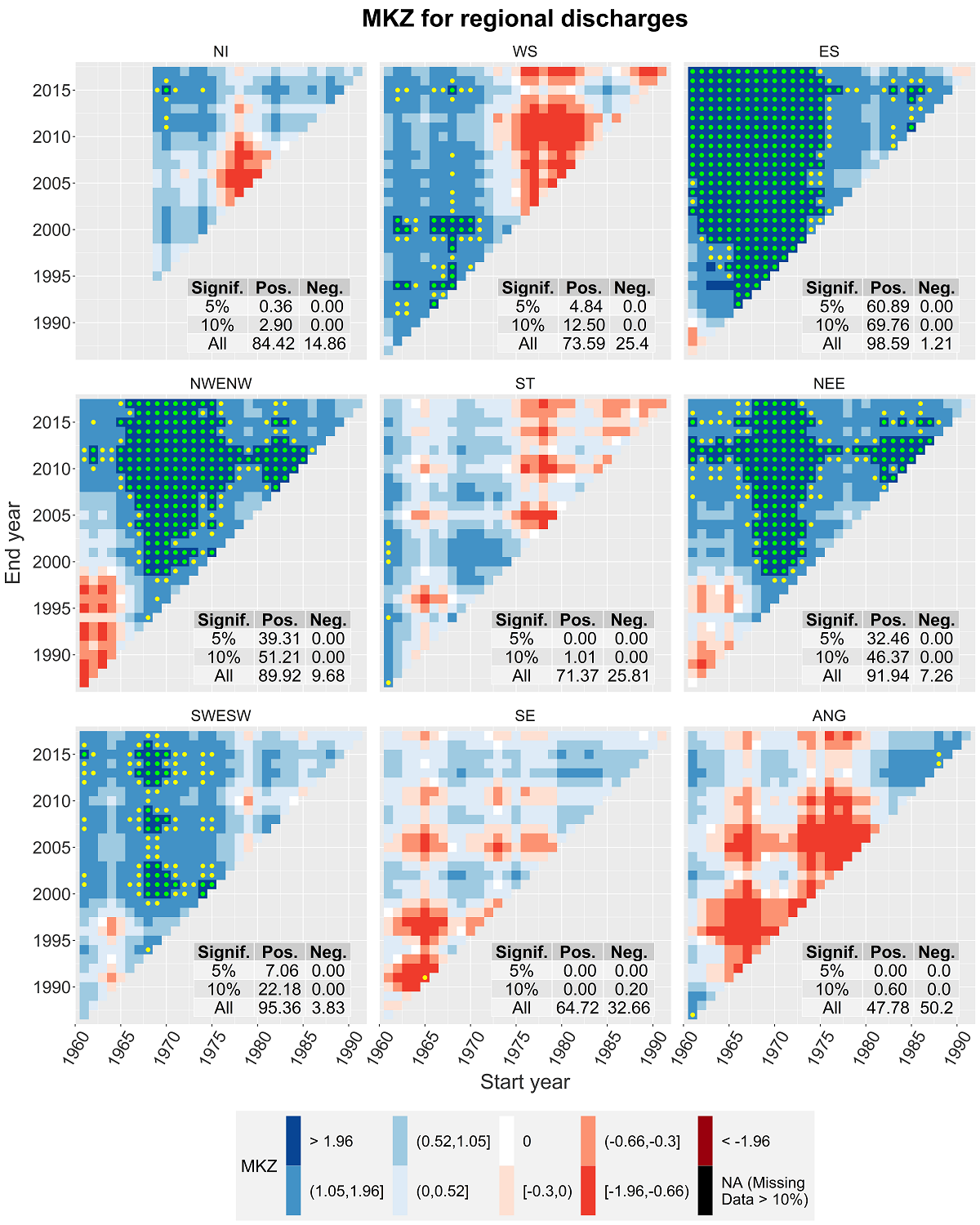The National Hydrological Monitoring Programme (NHMP) have published a paperREF updating a national-scale assessment of trends in peak flow data across the UK, in Hydrology Research. The comprehensive assessment of trends using the Peak Flows Dataset uses the full network, as well as a subset of near-natural catchments from the UK Benchmark Network. The claim of increased flooding generally holds up regionally and nationally, although a more complicated picture of spatio-temporal variability is shown.
The results demonstrate the resilience of findings from previous studies and show further regional analysis whilst considering important methodical considerations such as sensitivity to chosen study periods.

The NHMP is operated jointly by the UK Centre for Ecology & Hydrology and the British Geological Survey. The NHMP was set up in 1988 and aims to provide an authoritative voice on hydrological conditions throughout the UK and has a particular obligation to document major contemporary hydrological events and to identify and interpret long-term hydrological change and variability. Monthly Hydrological Summaries for the UK are routinely published as part of this programme, as well as Occasional Reports on major events. Further support was provided by the Environment Agency Flood and Coastal Erosion Risk Management Research and Development Programme, within the project: ‘Developing interim guidance for flood frequency estimations (no. FRS18087/IG/R1)
REFJ. Hannaford, N. Mastrantonas, G. Vesuviano, S. Turner; An updated national-scale assessment of trends in UK peak river flow data: how robust are observed increases in flooding?. Hydrology Research 2021; nh2021156. doi: doi.org/10.2166/nh.2021.156